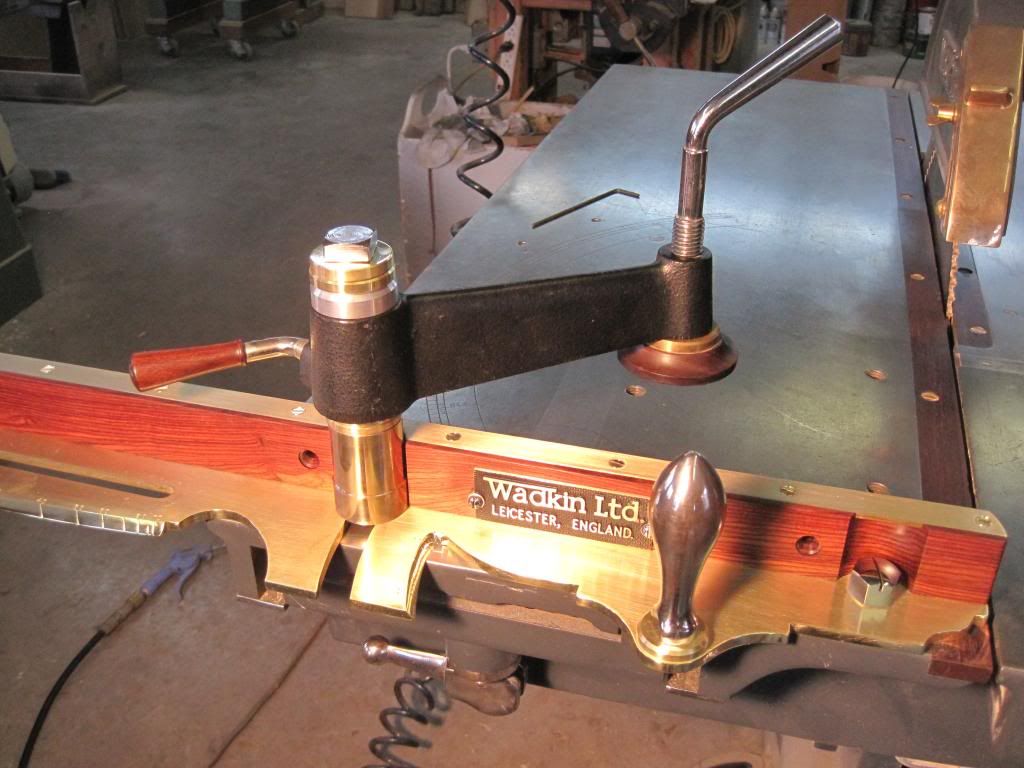Concerning the proper use of the sliding two position Euro fence.
I spent a few days at the Martin factory in Germany last year training on the safety, proper use, adjustments and maintenance of the machines.
When using this type fence in a conventional way (not with the sliding table) the fence should start at blade center for narrow rips. As boards get wider and the fence moves farther away from the blade the end of the fence should be about 30 degrees from center of blade. The picture shows a 30-degree angle being used just to give the idea. In practice just eyeball it. For solid wood the advantage of using the fence this way is less chance of kickback and easier on the blade.
For man-made sheet goods the fence should be used extended far past the blade. (Again, not with the sliding table)
The use of the fence with the sliding table opens up many more possibilities with the fence positioned behind the blade for many cuts. We have our slider outfitted with Airtight clamps and use the Fritz & Franz jigs for many things sometimes in combination with the Airtight clamps.
At the Martin workshop the German Meisters say with proper use the fingers should never be near the blade and cannot understand why we would want to depend on technology like Sawstop for safety. Most of the safety techniques require a sliding table saw though. Most shops in Europe do not use conventional table saws.
The old UK method with the short fence and large blade looks pretty dangerous to me. We are going to tour some UK shops this year and will be curious if this is still in practice.
Joe
photo 1.jpgphoto 2.jpgphoto 3.jpgSaw cut.jpgSlider trimming door.jpg




 Reply With Quote
Reply With Quote


 you can see it here at HSE safe work practice
you can see it here at HSE safe work practice 

